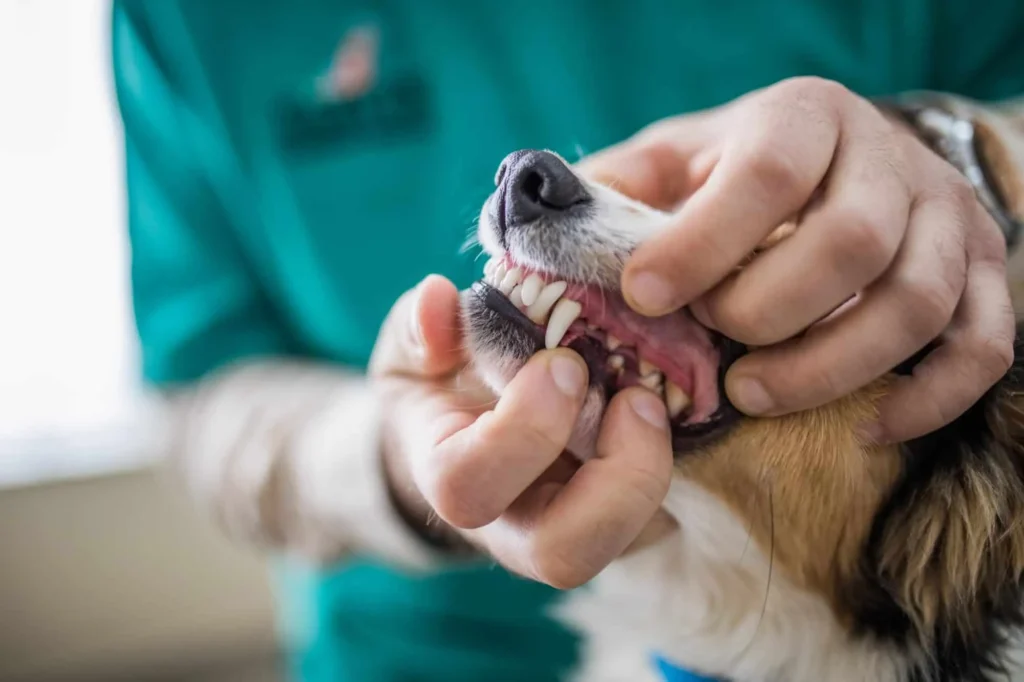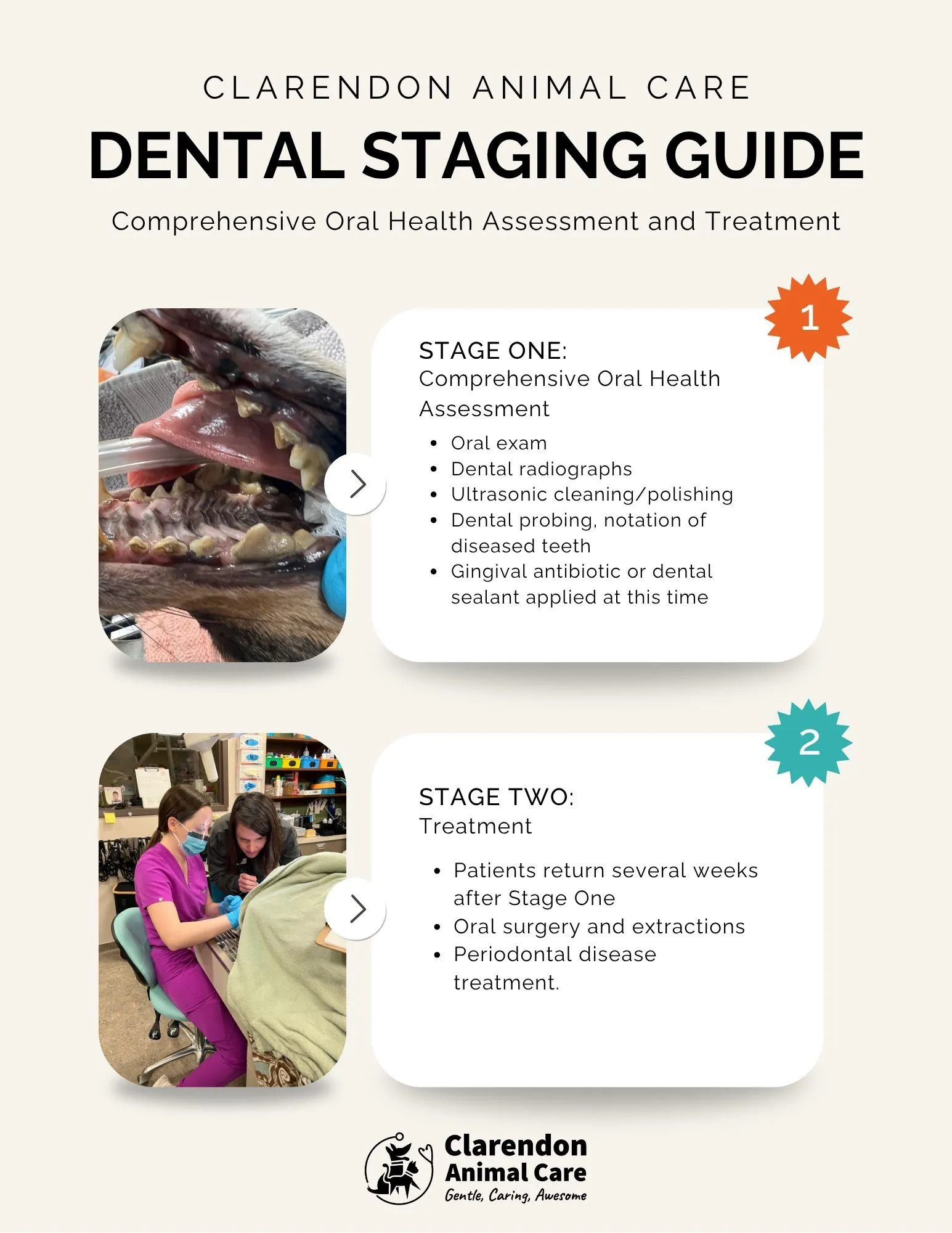
Dental Staging
We are doing a cool new thing to help keep your pets’ oral health in great shape. In line with the future of veterinary medicine, with best practices in oral health care and anesthetic safety, we are moving our dentistry and oral surgery practice to a Staged Model.
Hello Clarendon Animal Care family!
Why Dental Staging?
The old way worked fine for some pets – we identify abnormalities in their mouth while awake and recommend a dental procedure. You drop off your pet, and under full general anesthesia we perform full-mouth dental x-ray, a comprehensive oral examination, and a below-the-gums ultrasonic cleaning. Often those findings yield a list of recommendations – “these three teeth are broken and need to be extracted”; “this one tooth has a tooth root abscess (ouch!) and must be treated.” These situations are relatively straight-forward can typically be completed within 1-2 hours. The potential for concern is when we find significant disease and/or more than expected – such as the need for full mouth extractions in cats, or perhaps 10, 15, or even 20 heavily diseased teeth that need to be surgically extracted. These unplanned surprises can put your pet under anesthesia for many hours. Anecdotally, in our extensive experience, complications tend to be more common in procedures lasting greater than 2 hours – these can include hypotension / low blood pressure, hypothermia, and delayed recovery. While we maintain healthy caution around anesthesia in general, two shorter procedures are typically safer for your pet than one prolonged one.
So, what’s changing?
We’re going to treat dentistry and oral surgery the way human dentists and oral surgeons treat human patients – with a staged model. The first part is the same: You drop off your guy or gal, we place them under general anesthesia, then perform full-mouth dental x-rays and a below-the-gums ultrasonic cleaning, and finish up with a comprehensive oral exam. This takes place all in approximately one hour. Their veterinarian will create a treatment plan to be completed at the next visit in 2-4 weeks. A member of our team will go over the oral exam, x-ray findings, and treatment plan at the discharge appointment. We will get them scheduled for the follow-up visit in 2-4 weeks to complete the treatment / surgical portion of the complete oral health assessment and treatment.
Anesthesia twice?! Yikes.
The primary goal of staging dentals is to increase the safety for your pet. As noted above, anecdotally low blood pressure, low body temperature, and delayed recovery are noted more frequently with longer anesthetic episodes. Staging the procedure allows for two shorter procedures, which ultimately is safer for your pet.
Additionally, in the unlikely event there were anesthetic concerns or complications, the initial procedure can serve as a baseline for what to expect during a potentially more involved/complicated procedure for the oral surgery. We can always offer referral to a board-certified veterinary anesthesiologist if needed; there may also be rare cases where we find that the extent of disease is such that your pet would be best served by referral to a veterinary dentist.
Vet care is already so expensive – doing this in two separate visits sounds pricey?
The price of the Staged Dental Procedure is set to ensure that the costs of the two procedures will be the same as one procedure – no changes or tricks here. Splitting up the procedure into two separate events allows us to predict what treatments will be recommended for the second – you will receive a detailed estimate for both events. (This is a better option than what we are doing now, which is estimating the best- and worst-case scenarios that often results in an estimate with a $2-3K range.)
Because the second procedure is scheduled within 2-4 weeks of the initial procedure, there is typically no need to repeat preoperative lab work, the pre and post-operative radiographs are done at no additional charge, and all aspects of the treatments (periodontal treatment, oral surgery, anesthesia, nerve blocks, etc.) are the same as if they were done with the first portion.
We are very excited to be on the leading edge of this new model of veterinary dental and oral health, ensuring the safest care for your four-legged family member. Please do not hesitate to reach out with any questions about this updated oral health protocol!

